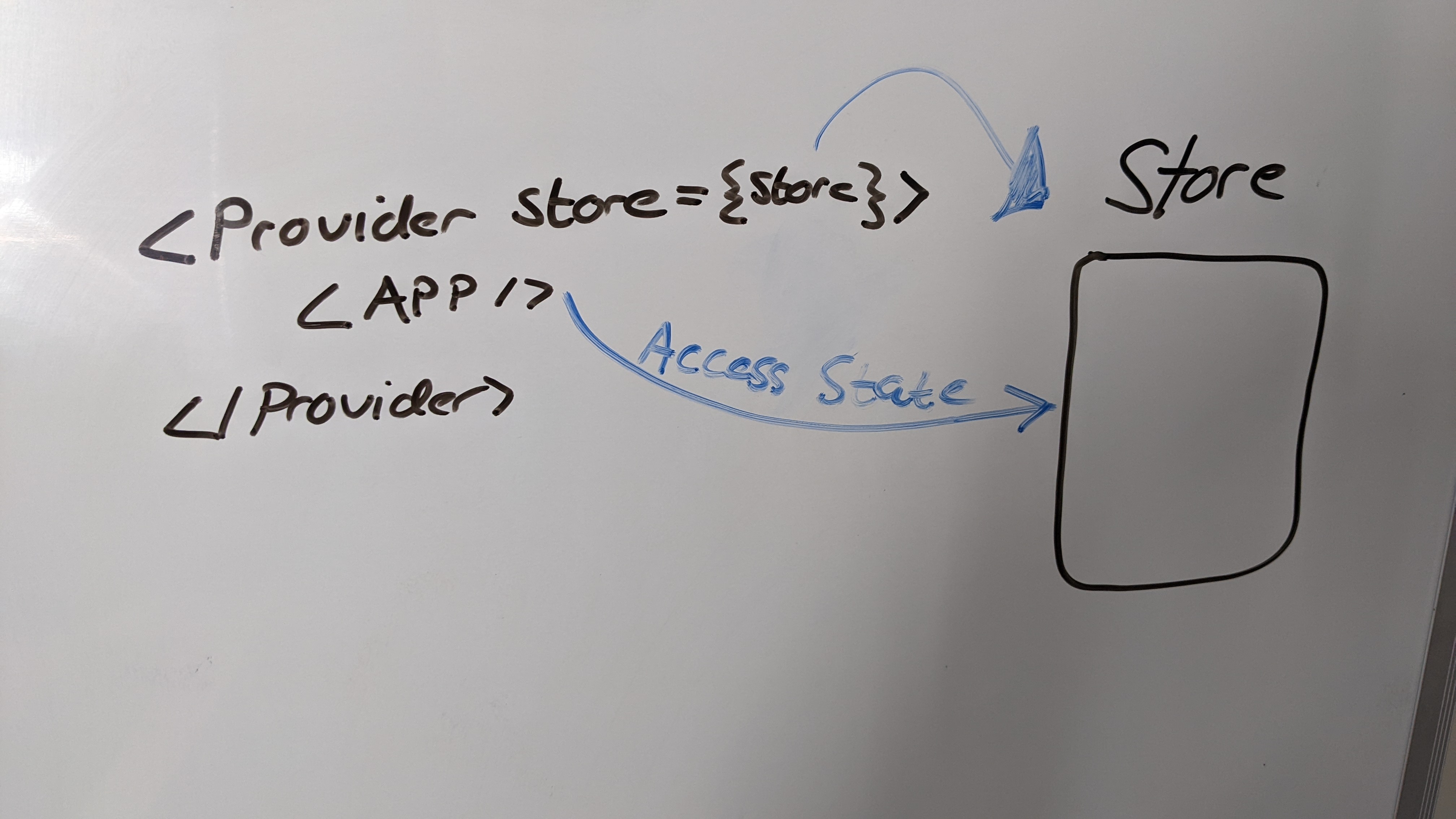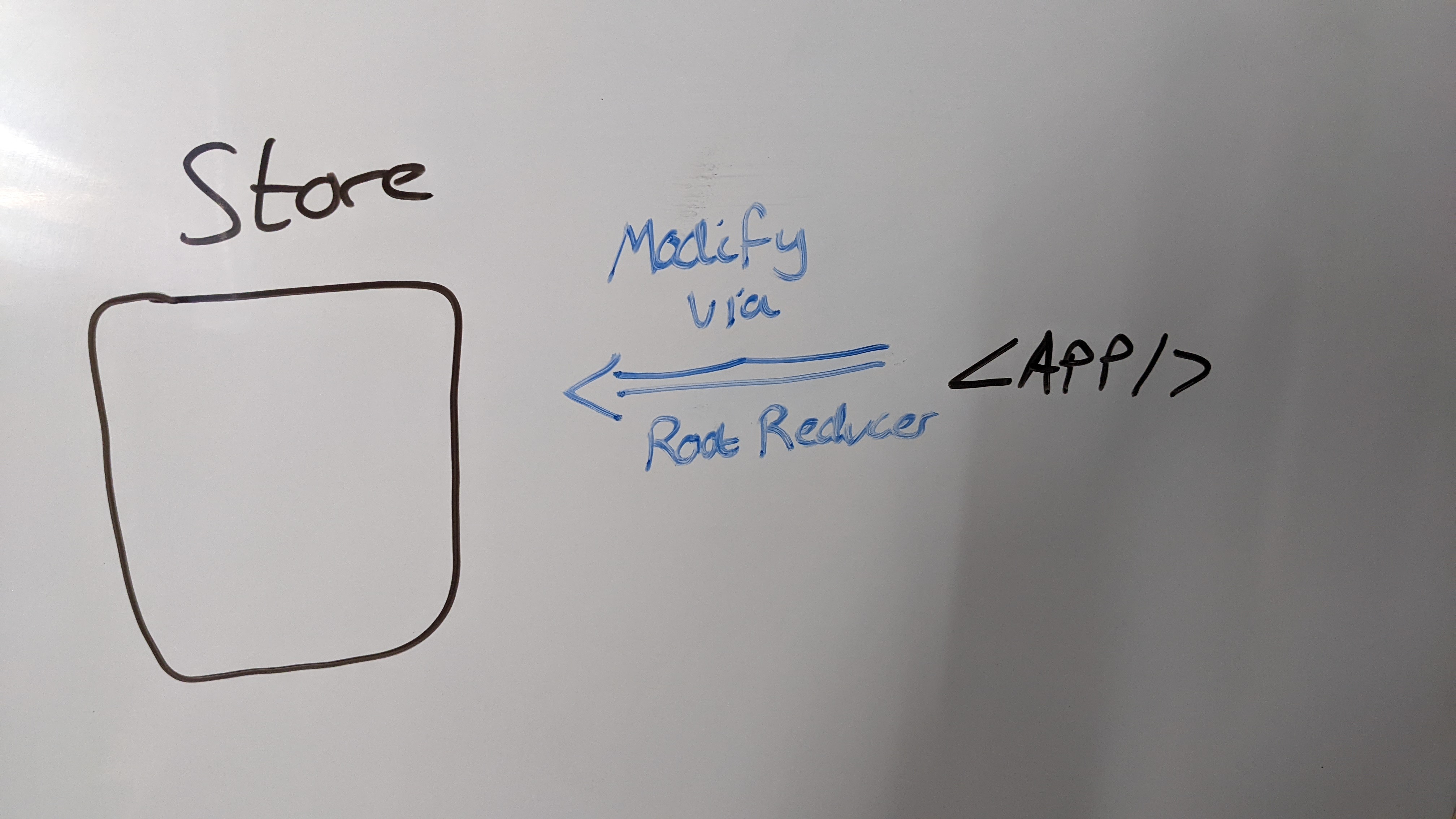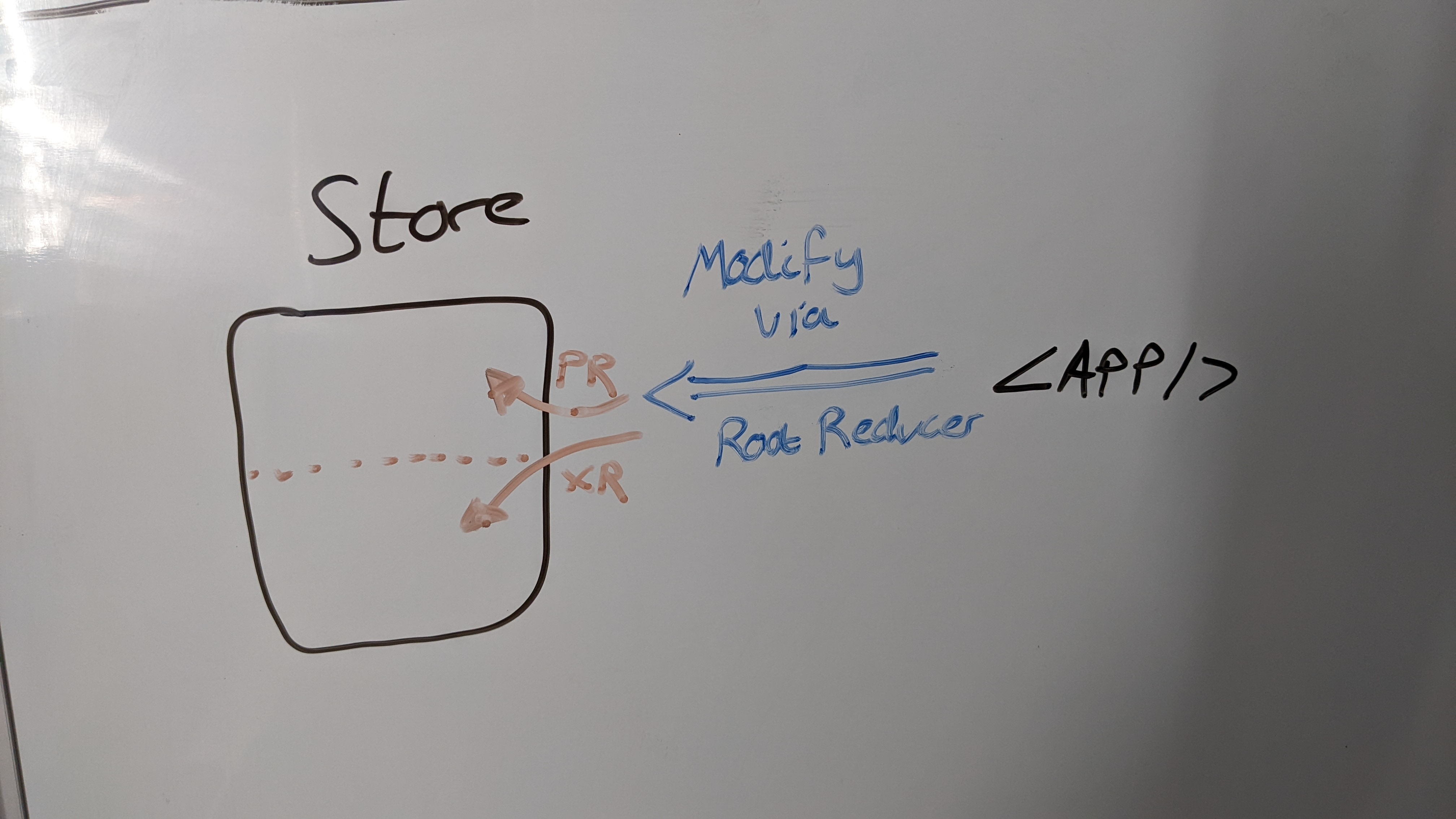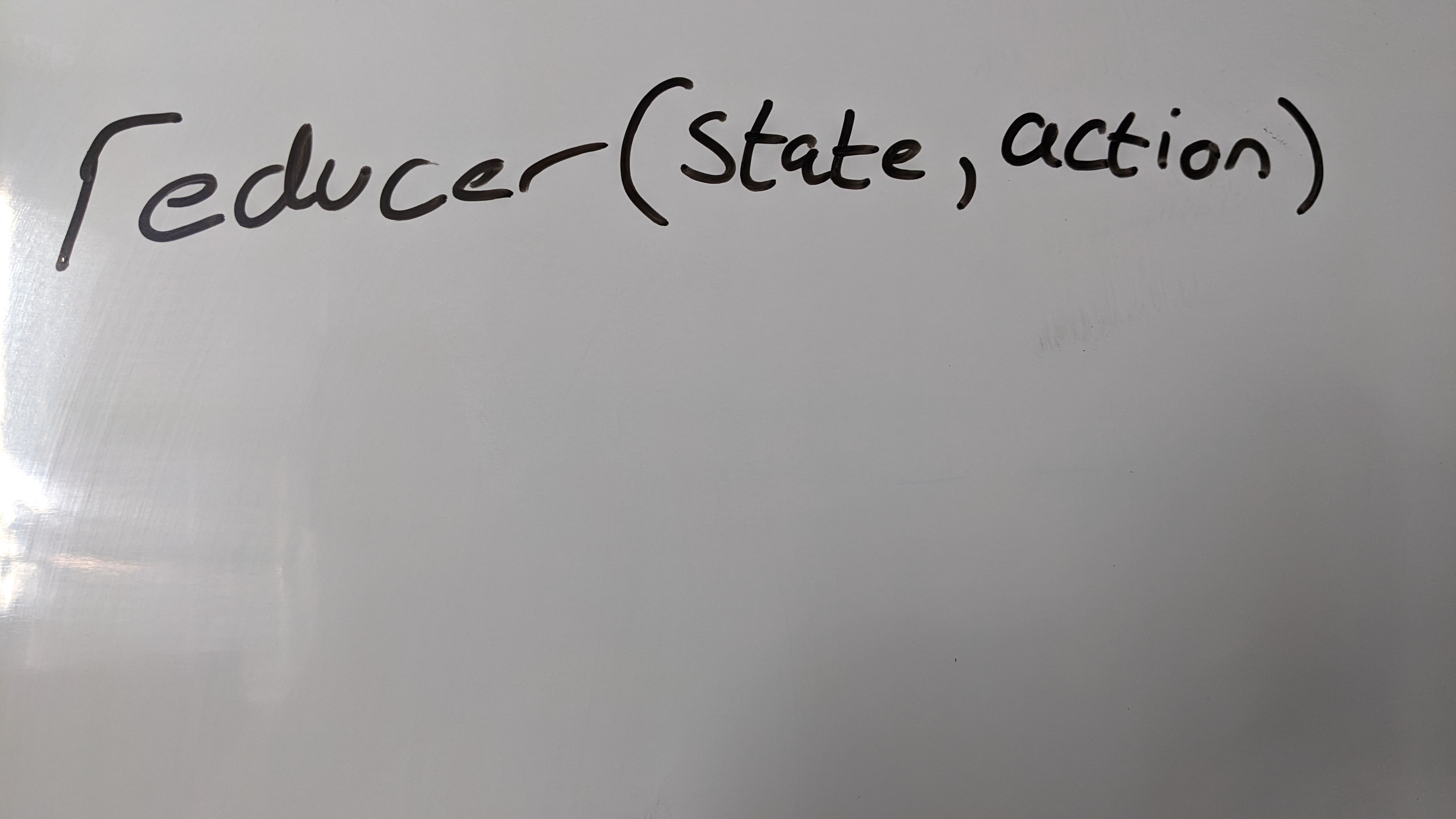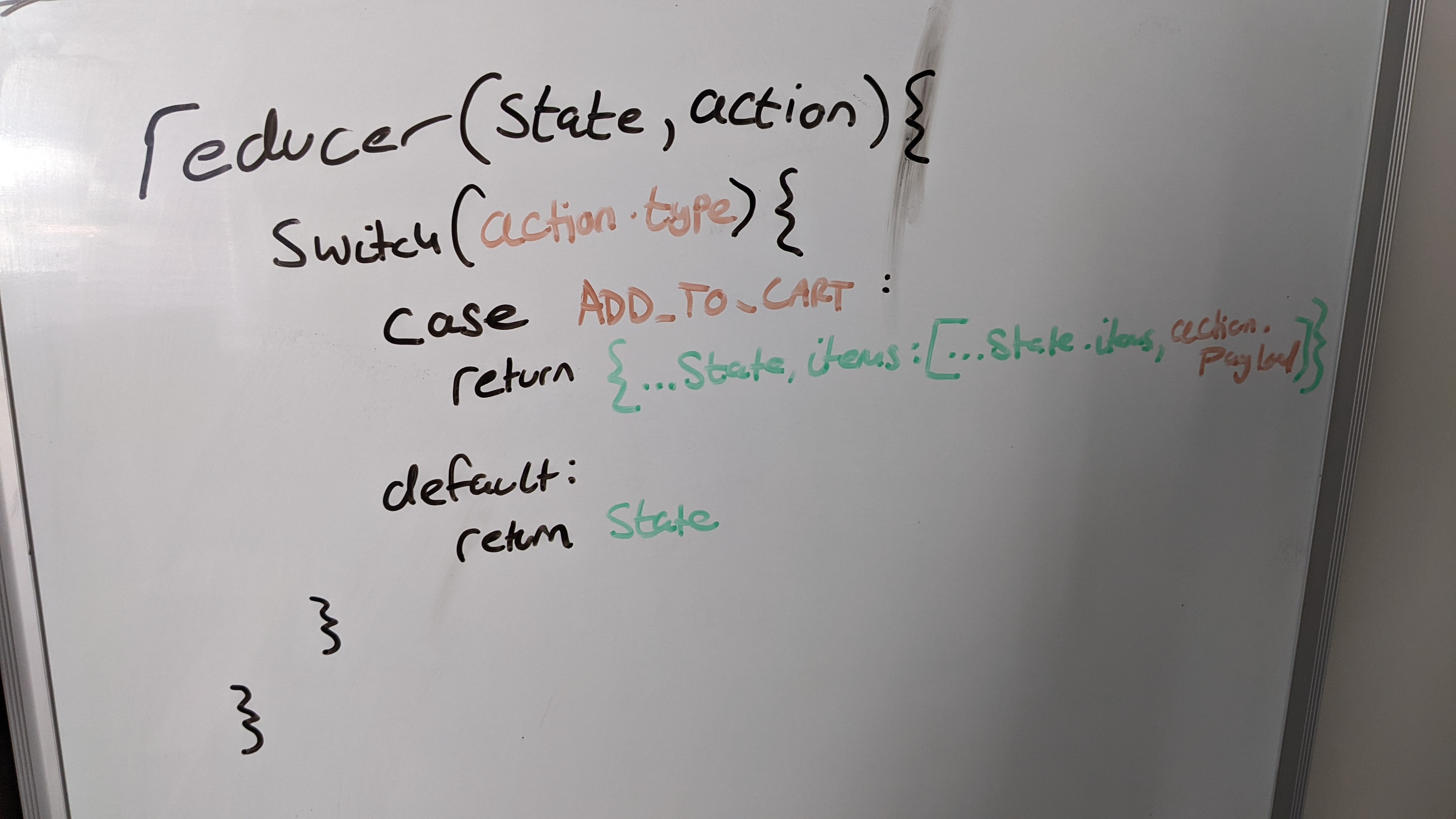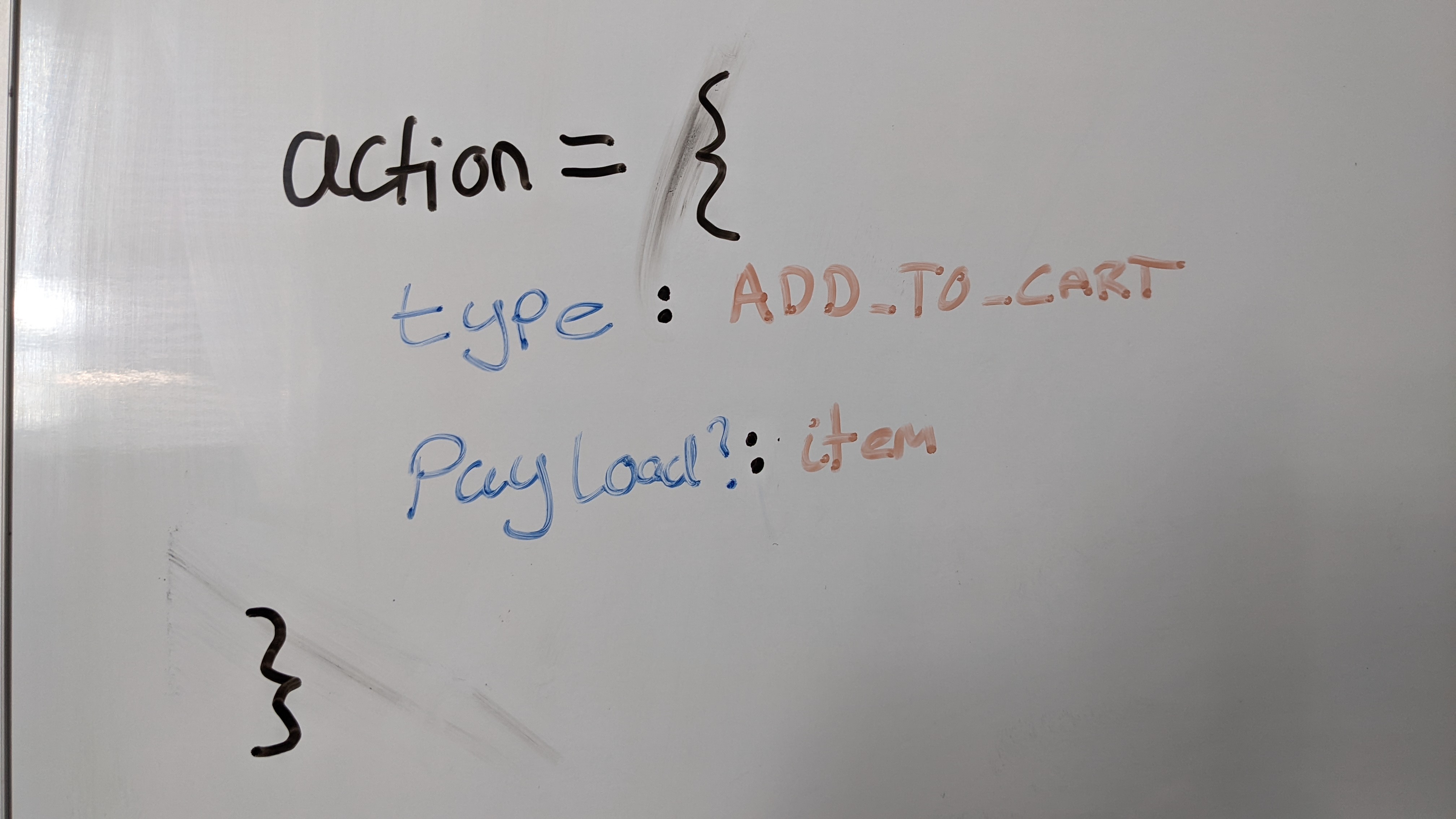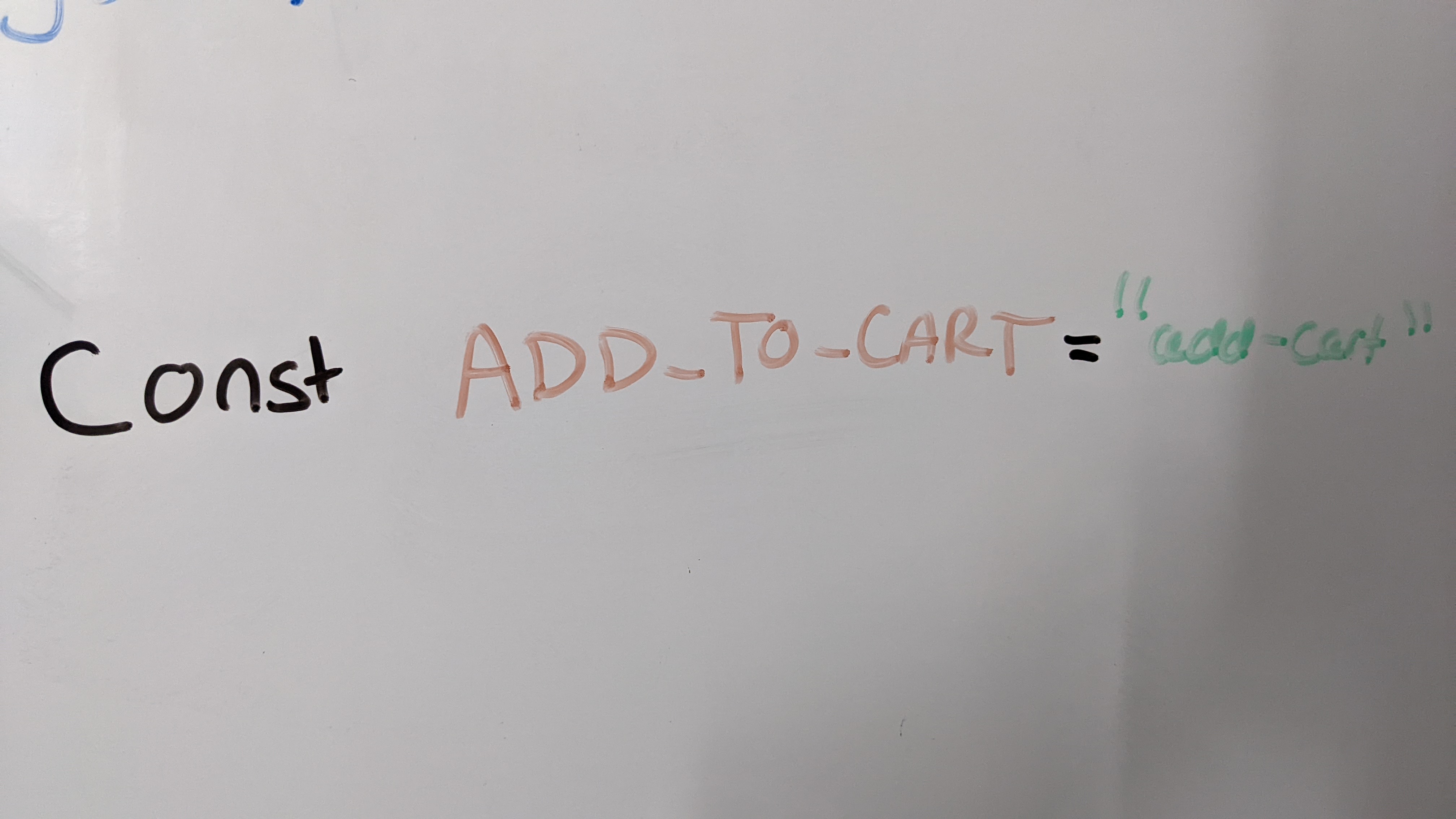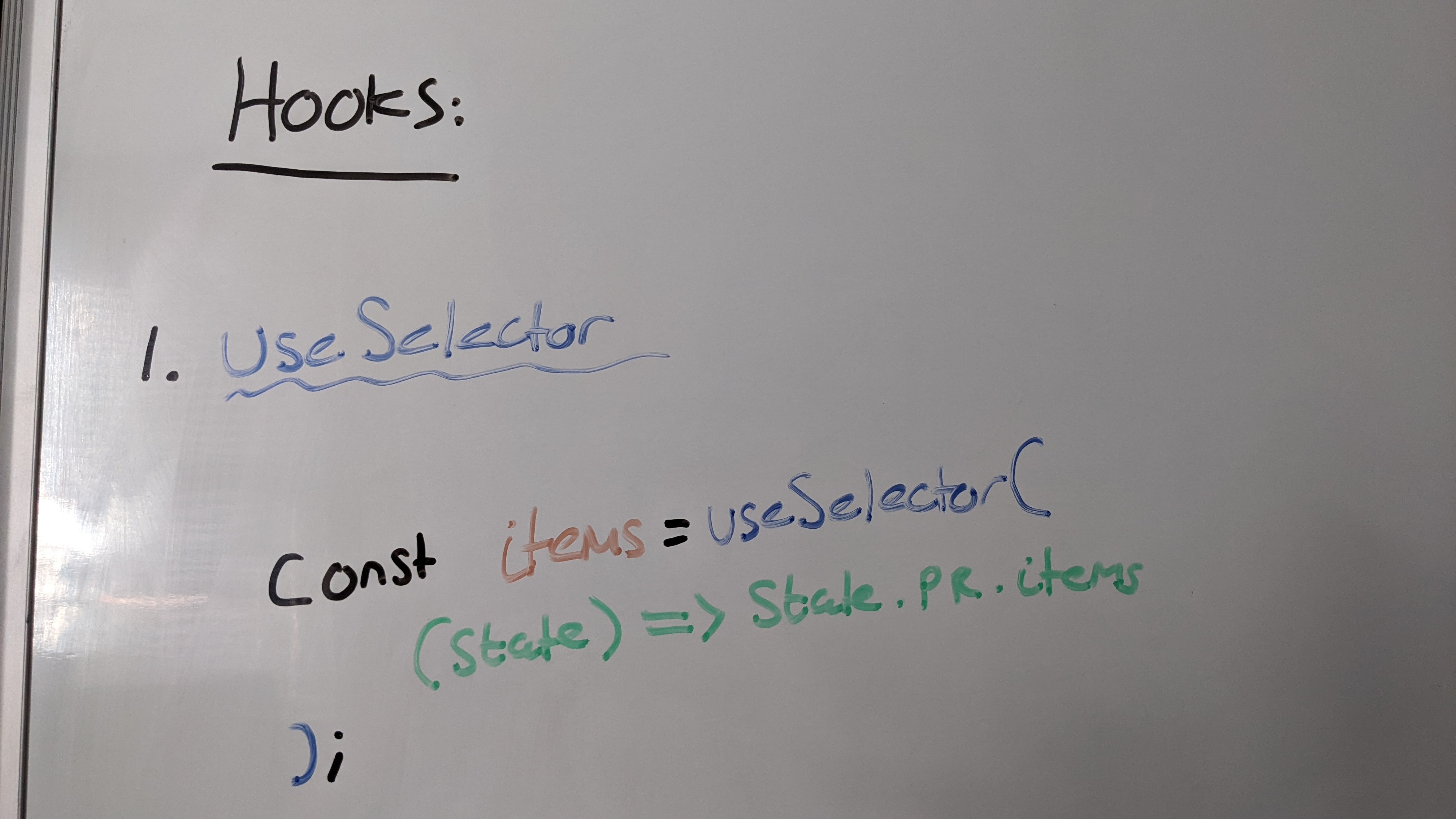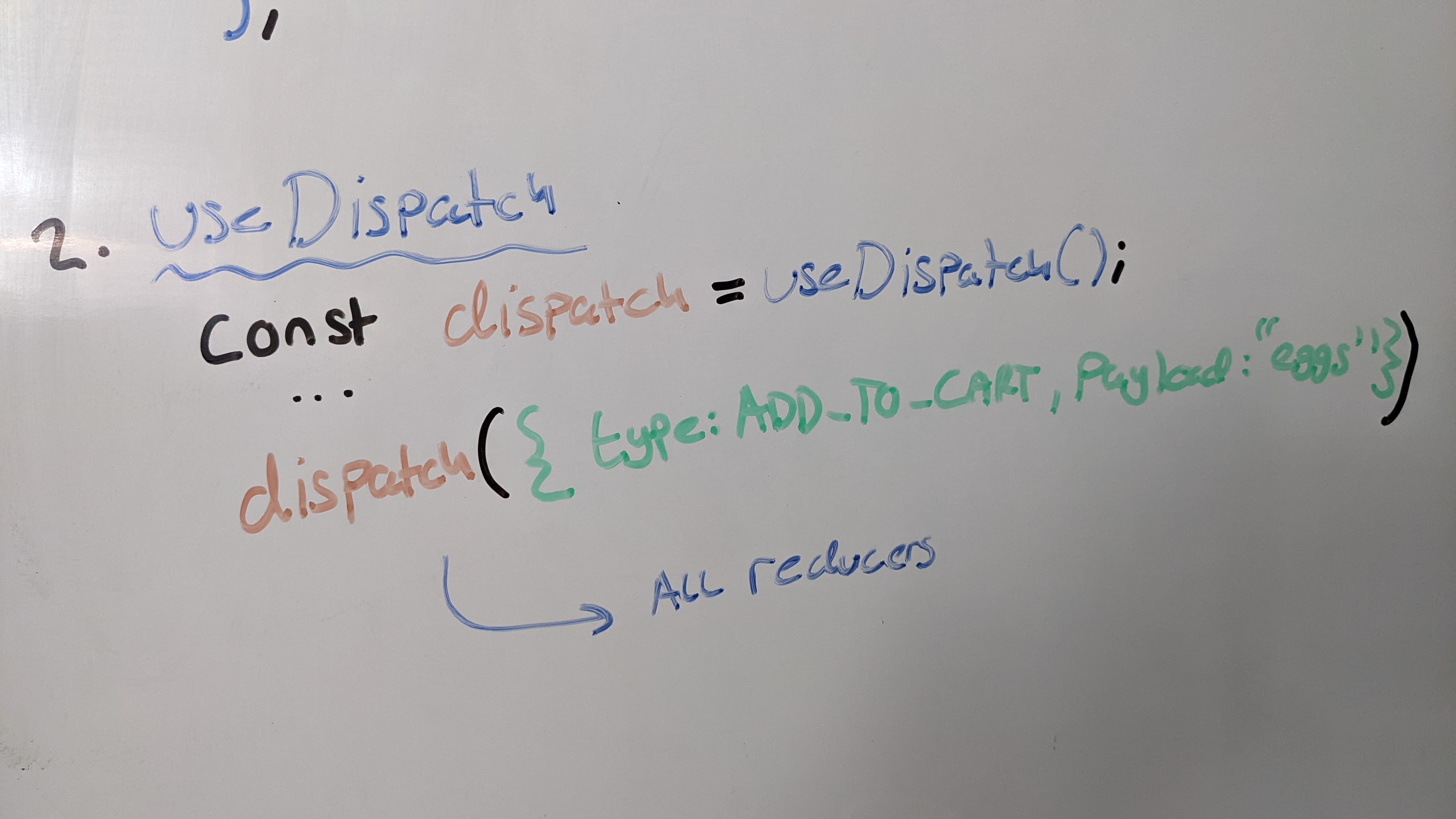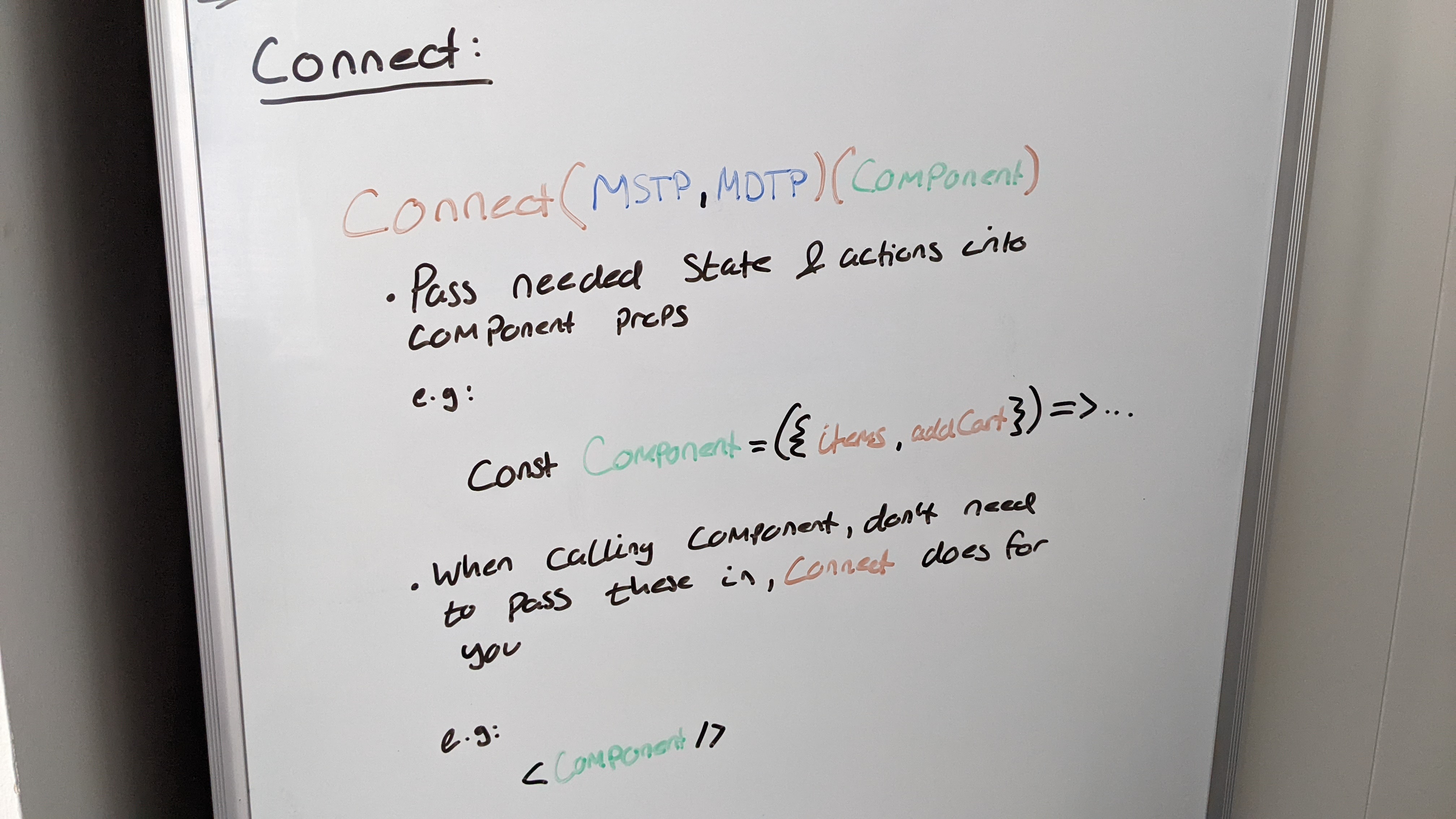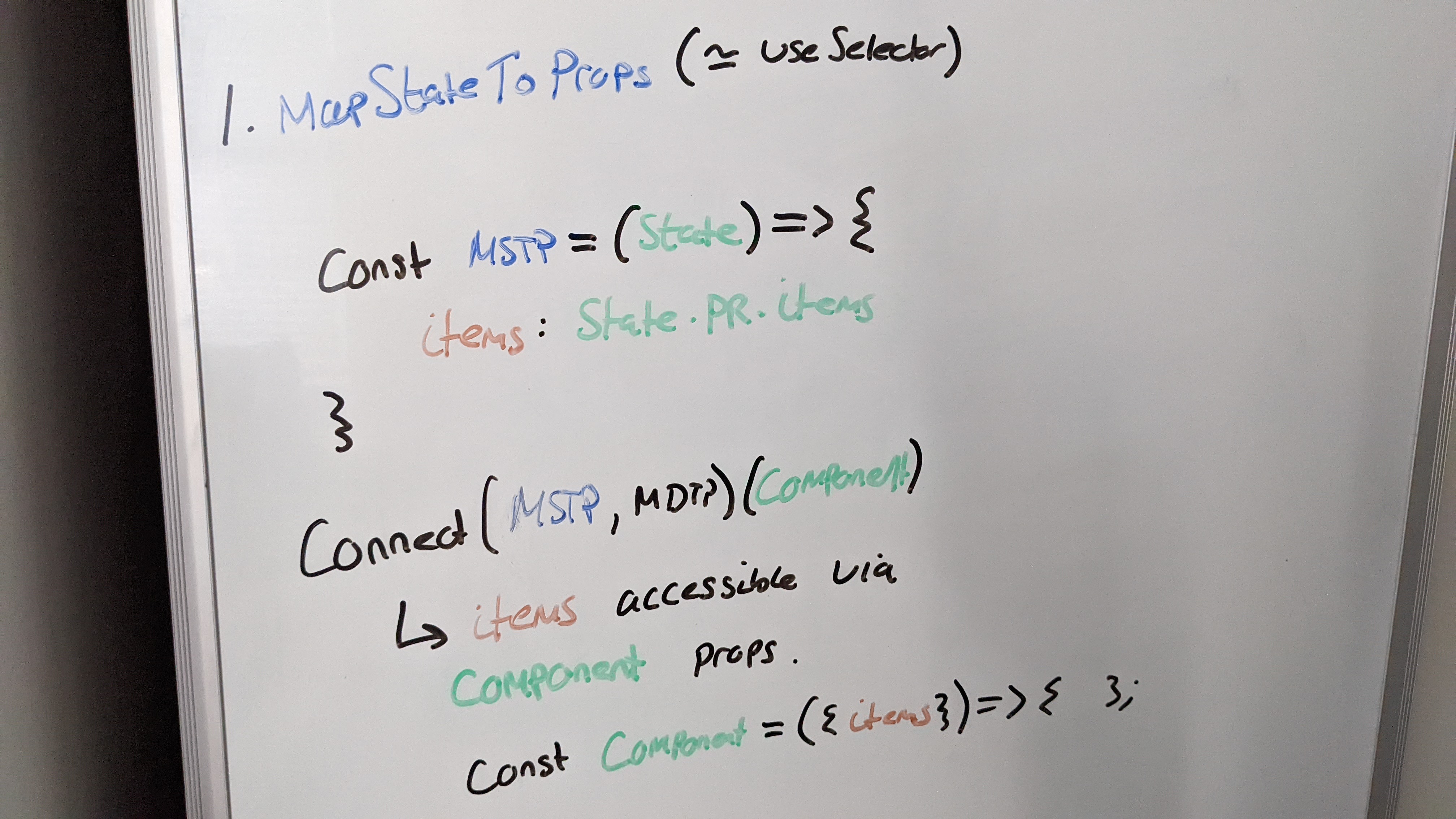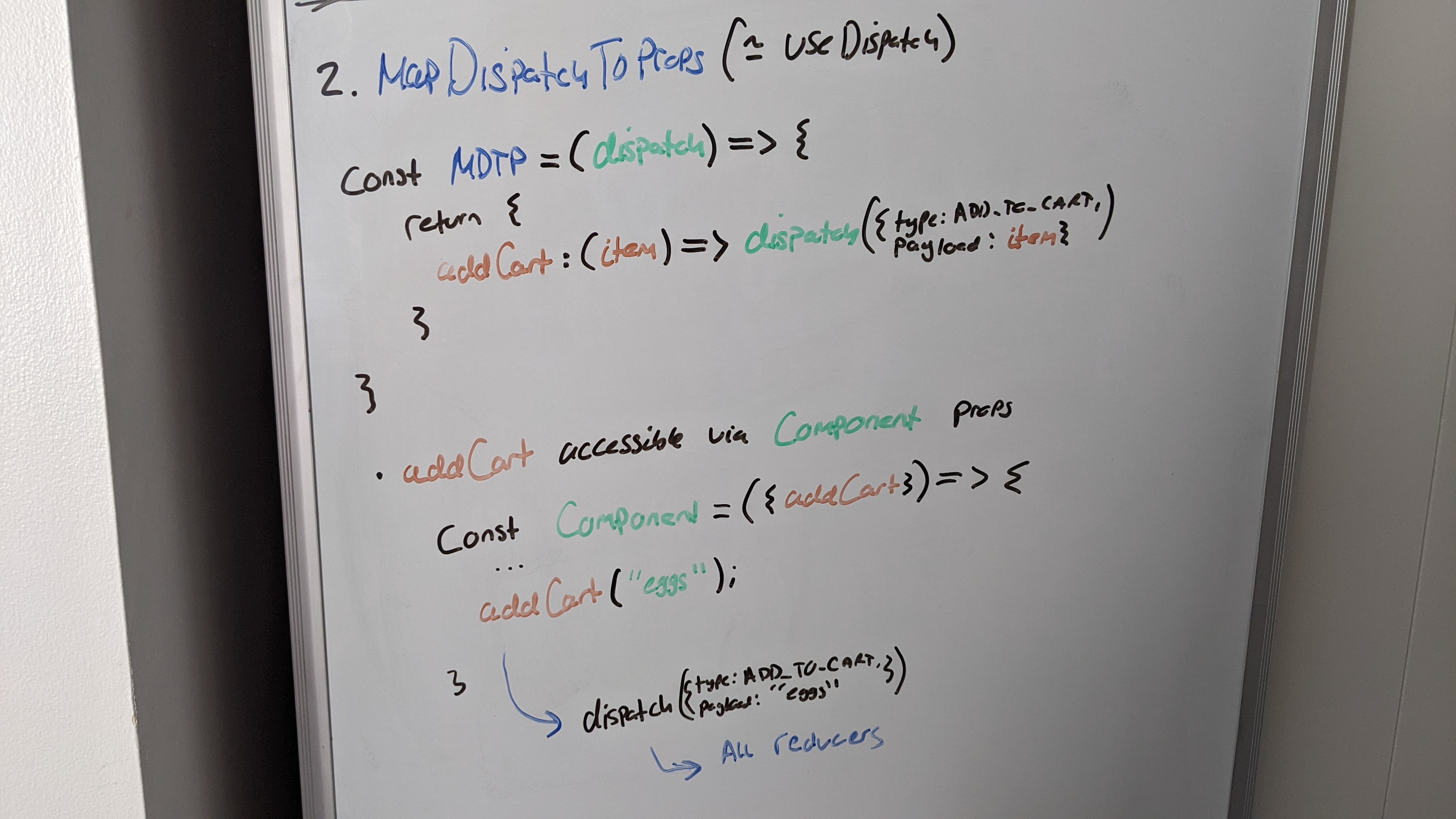This repo is a sample to aid the ldn8-horizon team complete their project, by showcasing an example of how would could use redux to enable filtering.
Redux is store-based, meaning application state can be stored in a blob called the store. We pass this store to the <Provider> tag, and wrap our application with this. This means that our application has access to the store.
In order to protect how we interact with the store, we limit the way we can modify the state of the store by using reducers. A reducer is just a function which allows us to modify the data in the store. When we configure our store, we need to pass it a reducer as this will be our entry point for changing the store; we often call this reducer the rootReducer.
As our application grows, the capabilities of the rootReducer can grow very large. In order to add some structure to our store, we can split our rootReducer into separate reducers, each responsible for some state of the store (effectively splitting the store into smaller sections). For example, our rootReducer can be split into a programsReducer which can have some state (e.g. {programs: Program[], selectedProgram: Program, user: string}), and another reducer (e.g. the XReducer in the diagram below). We do this via the combineReducers function in Redux.
A reducer is a function which takes 2 parameters: the current state which that reducer is responsible for, and an action (see below for actions).
Reducers then often contain a switch statement which will perform some logic based on the action's type. Each case must return the new state of the store (often done via spreading the current state into a new object, then updating the relevant property based on the action). Importantly, the switch statement requires a default case which returns the current state. This is because actions are sent to all reducers when dispatch is used (see below), and so they need to be able to handle actions they don't care about.
An action is simple a JS object with 2 properties:
type: A string-constant which identifies the action uniquelypayload: An optional property which contains data needed for the action (e.g. details of anitemwhen adding to the cart via theADD_TO_CARTtype).
Action types are literally just strings. We use const and use SCREAMCASE to denote that they are _global constants, as each action type must be globally unique.
There are 2 primary methods of interacting with the store (getting information from it, and passing actions to reducers to modify the store):
- Hooks
- Connect
In order to get data from the store, we can use the useSelector hook. We pass this hook a selector, which is a function which takes the current state of the store, and returns the relevant section we want access to.
In order to modify data in our store, we use the useDispatch hook to get access to the dispatch function. dispatch is called with an action, and will pass that action to all the reducers in our application (which will then perform the logic to update the store accordingly).
A different (older) method of interacting with the store is via the connect function, which will pass the necessary state and actions to a react component for us, putting them in the component's props. This means we do not need to put selector/dispatch logic in our component, instead hiding it away into the mapStateToProps function (MSTP), and mapDispatchToProps function (MDTP).
mapStateToProps is roughly equivalent to useSelector, in that it allows us to access data in our store. This is a function which takes in the state of the store, and returns an object containing the values we need assigned to various keys. These keys are then accessible in our component's props.
mapDispatchToProps is roughly equivalent to useDispatch, in that it allows us to send actions to reducers. This is a function which takes in the dispatch function, and returns an object containing keys which correspond to functions which make use of the dispatch function. These functions are then placed into props, and can be called to dispatch the action specified in the MDTP function.
